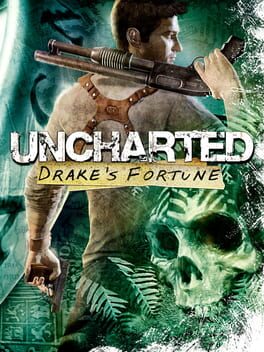Most game genres have a landmark title that’s considered the definitive template. For platformers it’s Super Mario Bros, for first-person shooters it’s Doom, these are legendarily great games that not only established a genre, but shaped the course of the entire industry. However, it’s not always the best games that earn a spot in history, sometimes it’s the ones that fill an unserved demand. This is the case for Uncharted, a game that doesn’t have the same timeless appeal as its genre-founding contemporaries. Even series fans commonly suggest to skip it and play Uncharted 2 instead, the more successful followup which raised the bar for games to come. While I agree that this game isn’t as good, I would recommend it to anyone interested in the genre exactly for that reason. These cinematic adventure games might seem mindless and simple at first, but Drake’s Fortune has flaws that highlight the otherwise subtle details that make these games work. Developers would soon learn how cover-based shooting isn’t interesting on its own, and would instead use it as the glue that links setpieces and narrative moments together. This game’s jungle was little more than a backdrop, but future installments would use locations like sinking ships and burning buildings to ramp up the excitement in interesting ways. Even though you’re essentially doing the same shooting and climbing in each game, the difference in player engagement is vastly different. It’s a perfect demonstration of how the unobvious details can be the difference between mediocrity and greatness.
